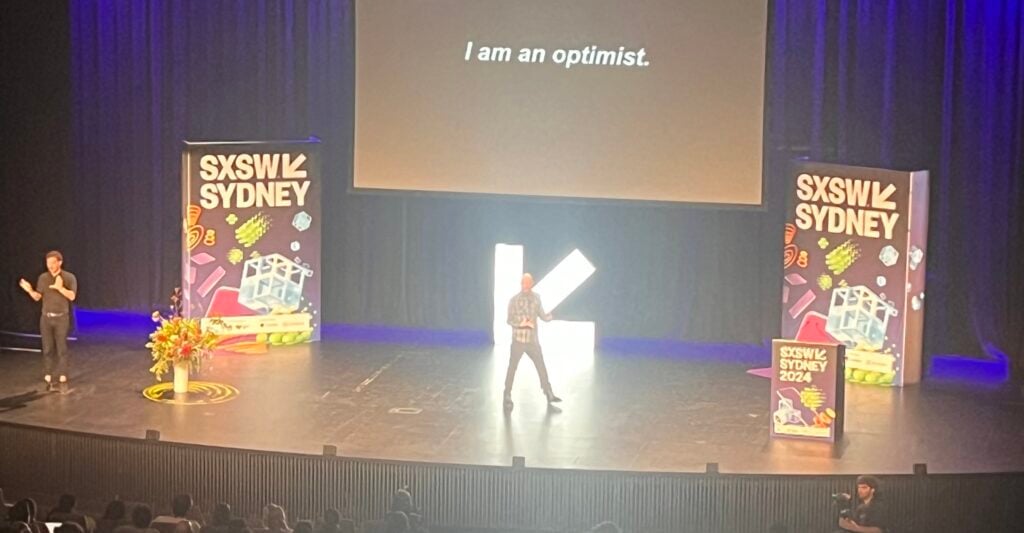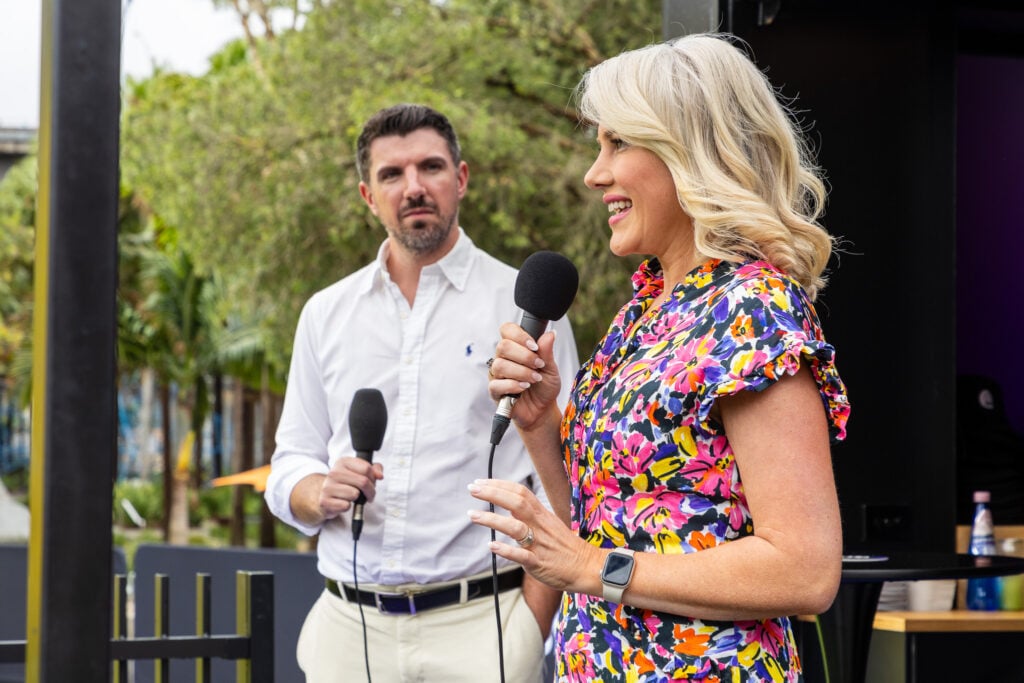SXSW Sydney returned for Day 2 and not even Sydney’s gloomy skies and morning rain could dampen the spirits on the ground. With ponchos and umbrellas at the ready, attendees descended on Darling Harbour and surrounds, with a continued sense of curiosity as to what inspiration & positivity was to come. Upon reflection of my own day, it was a case of thinking towards the future, but not without a trip back in time for inspiration!
How To Think Like A Futurist? Think Beyond The Next Big Thing
Speaking of positivity, futurist Brian D. Johnson’s presentation, “How to Think Like a Futurist”, challenged the audience to reimage the future with a proactive and human-centred approach. Beginning with a declaration that he is optimistic about the future despite so much negativity, Johnson emphasised that futurists “don’t predict the future…instead, we create frameworks to understand a range of possible outcomes, helping us take action today toward the futures we want.”

Johnson highlighted the concept of “Übermorgen” — the day after tomorrow, or “the thing after the thing” — to encourage looking beyond immediate trends to see what’s coming afterwards.
In discussing AI, Johnson, like many other speakers at SXSW Sydney, reminded the audience that “AI isn’t taking your job. What’s taking your job is a human — a human using AI.” While many people remain concerned about the impacts of AI on society, Johnson explained to the audience that this is not an AI problem, but a human problem. Using the analogy of a hammer, Johnson explained how hammers can be used to build amazing things, but can also be used as a weapon. You see, the problem isn’t the hammers, it’s the humans using them.
So how do we change the future? Well, as Johnson encouragingly puts it, “we change the stories people tell themselves about the future they live in”. Johnson’s ultimate challenge was for individuals to embrace their role in shaping the future, using imagination and collaboration as powerful tools to create a positive, human-centred world. “Own the fact that you will build the future—you will build your future, the future of your family, your community, your business, everything about it.”
The Future of News is Local and Personal
Venturing out to Tumbalong Park to experience all the great activations and experiences that SXSW Sydney has to offer, it’s hard to not stare and wonder at Suntory’s giant 12-metre-tall -196 Vending Machine. Venturing a little further, however, and it was time for ARN’s Educational Series with a session led by Fiona Ellis-Jones (head of News & Information) and Brooklyn Ross (newsreader for The Kyle & Jackie O Show).
Discussing ARN’s evolving approach to radio news, Ellis-Jones highlighted ARN’s strategic focus on quality journalists, audience trust, regional stories and personalised news through an audience-focused approach. Speaking to how he approaches news reading on The Kyle & Jackie O Show, Ross highlighted the challenges and satisfaction of serving news across both Sydney and Melbourne audiences by providing local bulletins which enhance the relevancy of stories and strengthen audience engagement.
Future talent was highlighted as a key challenge for journalism in the Australian market with many universities merging journalism and corporate comms degrees leading to lower uptake of journalism as a career pathway compared to “what was once a really fiercely contested competitive field to get into”. To bridge the gap, Ellis-Jones emphasised how ARN is investing heavily in grassroots journalism through university partnerships, cadetships, and high school outreach, aiming to inspire the next generation of journalists.

Brooklyn Ross & Fiona Ellis-Jones at ARN House
Cybernetics – Back to The Future Through Tech and Art Innovation
As I mentioned in my blog yesterday, my favourite thing about SXSW is the ability to find yourself immersed in an idea or topic that stretches your way of thinking or is completely out of the ordinary of your day-to-day. In a presentation from ANU’s Amy McLennan and Andrew Meares (ANU School of Cybernetics), it was a trip back in time (with the use of an original Kodak Carousel Slide Projector!) to explore the interconnections between art, technology, and culture.
Through examining historical exhibitions like London’s 1968 “Cybernetic Serendipity” and subsequent cybernetic developments in Australia, McLennan and Meares highlighted how early computing and cybernetics redefined what art could be and how computational art from the 60s really was laying the groundwork for future visual art, animation and even generative AI.
In essence, the session illustrated how early collaborations between tech and art laid the groundwork for modern digital creativity, urging the audience to think of technology as a connector rather than a replacement for human ingenuity. An inspiring presentation that challenges you to wonder what future innovations in the arts have now been unlocked through advancements in AI.
With each session and activation, SXSW Sydney sparks a fresh wave of inspiration, leaving me eager to see what transformative ideas tomorrow will bring.
See also: SXSW Blog Day 1 – Sessions with Canva’s Melanie Perkins and Meta AI guru Manohar Paluri


